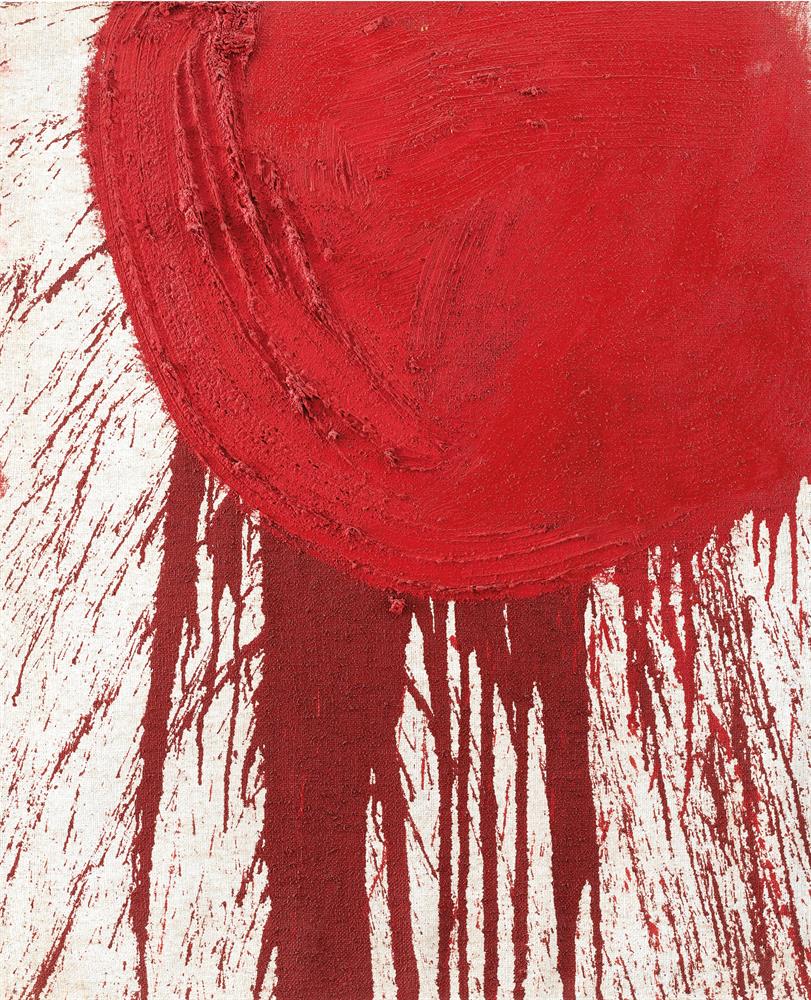
Vienna 1938 - 2022 Mistelbach
Untitled
Oil on jute
110 x 90.5 cm
Signed and dated on the reverse: Hermann Nitsch / 1995
Provenienz:
Galerie Ronchini, Terni
Private collection, Terni
acquired there by the previous owner
At the heart of Hermann Nitsch’s oeuvre is sensory perception, comprehending by means of all the senses: the intention is for the artist’s ‘actually felt (sensory) state of arousal and abandonment’1 to be transferred to the viewer, and to be captured in the work. In the analytical tradition of Sigmund Freud, deeper layers of the psyche were to be made visible, whereby repressions above all were to be transformed into art. There are parallels to the currents of the Informel and Tachism emerging at the same time, which were likewise concerned with man’s inner life in the sense of instinctive drives, the unconscious and the archaic. Nitsch drove these ideas forward by putting the whole creative process into the more all-encompassing, dramatic-theatrical context that included set periods of time, into which the visitor or viewer was integrated. ‘my action painting is the visual grammar of my action theatre on a pictorial surface’, the artist affirmed time and again.
Action painting ‘became the ritual entry point to my actions. the dionysian process of this often ecstatic-excessive action painting led to the excessive process of the actions.’2 The present work, which is somewhat bigger than the usual small formats, is from 1995 and captivates us with its powerful, dominating, red circular surface, which in part is painted in very impasto-style. This element interrupts the flow of paint by means of form and colour, on the one hand, while it emphasises the trickles and splashes even more, on the other, creating tension which fascinates the viewer. The archaic feelings awakened by Nitsch’s spill paintings are intensified, moreover, by the natural structure of the coarse jute canvas.
